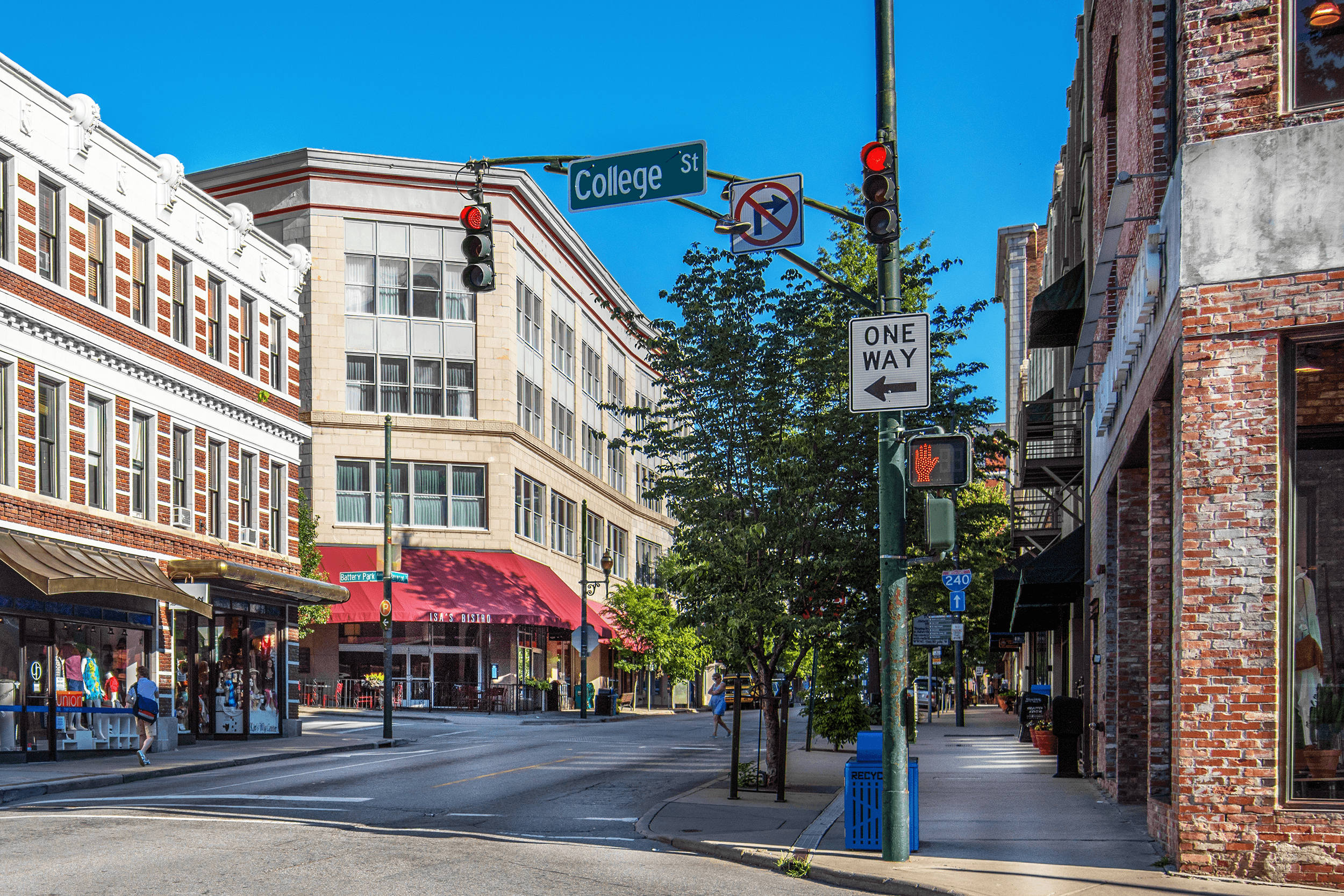Latta Plantation Nature Preserve
This 1,343-acre nature preserve just outside of Charlotte is nested along a peninsula between Mountain Island Lake and Gar Creek in Huntersville. Latta Plantation Nature Preserve has much to offer, hiking, Segway adventures, kayaking, fishing, and horseback riding. There is a Visitors Center, 2 canoe launches, a fishing pier, 2 picnic areas, several parking lots, even one designated for horse trailers. 16 miles of trails are spread throughout the park. Biking is limited to roads and paved paths.
Located within the park are also the the Historic Latta Plantation House and the Carolina Raptor Center.

Carl Sandburg Home
“A poet of the people”, writer, editor, three-times Pulitzer Prize winner, Carl Sandburg and his wife Lilian lived in this house from 1945 to 1969 along with their three daughters. During this time Carl Sandburg published more than a third of his works and won the second Poetry Pulitzer Prize. The 264-acre park offers many trails, where you can enjoy the wonderful landscape with its picturesque views.

Historic Hendersonville Railroad Depot
Model train enthusiasts of all ages can spend hours here and admire the wonderful work of the Apple Valley Model Railroad Club. Located in the beautifully restored Historic Hendersonville Railroad Depot, the club’s passionate members have built an H0-model railroad of enormous proportions. Covering an area of 22 feet wide and 100 feet long, the model railroad has been placed in a Western North Carolina setting.

Historic Henderson County Courthouse
With the arrival of the railroad in 1879, trade and tourism brought prosperity to Henderson County. Built in 1905 by architect Richard Sharp Smith, who had been the resident architect of the Biltmore Estate, the Henderson County Courthouse is also part of the National register of Historic Places. Today, the Henderson County Heritage Museum is located in the courthouse.

Brinegar Cabin at Doughton Park
Re-live life in the mountains as it was over 100 years ago. Brinegar Cabin at Doughton Park was the homestead of Martin and Caroline Brinegar who lived in this cabin for almost 60 years. The 7,000-acre Doughton Park, one of the largest parks in North Carolina, is a great destination for hikers, offering 7 different trails ranging from 1 mile to 7.5 miles one way. It also has a large campground on the north-eastern side of the park near Milepost 239.

Historic NC School for the Deaf
The Historic North Carolina School for the Deaf is the second historic state institution in Morganton. Situated on a beautiful hill south of downtown, the school’s campus comprises 14 historical buildings constructed between 1891 and the mid 1930s, including the magnificent Main Building with its imposing five-story clock tower. A small museum, located on site, explains the history of the school through old pictures, architectural drawings, articles and memorabilia (by appointment only).

Historic Broughton Hospital
The Historic Broughton Hospital was one of two large state institutions, which were brought to Morganton in the late 1800s. Originally called the Western North Carolina Insane Asylum, the Broughton Hospital, which has considerably expanded over the years, continues to be a major employer in the region. The historic buildings can still be viewed from the outside today.

Railroad Depot and Museum
The Railroad Depot and Museum is a cute little museum located in a beautifully restored train station from the 1860s. The museum features a collection of railroad memorabilia including nostalgic dining car tableware, an old telegraph, a ticket counter, a brass bell and a headlamp from a steam locomotive.

Historic McDowell House
The Historic McDowell House, which is located in Quaker Meadows 2.5 miles (4 km) from downtwon Morganton, is a beautifully restored plantation home from 1812 and the oldest brick home in Burke County. It is said that in 1780 on these grounds Charles McDowell’s father and other Patriot soldiers made plans, which led to the victory over the British in the Battle of Kings Mountain during the American Revolutionary War (1775-1783).

Historic Tate House
The Historic Tate House is not just a beautiful building in a park-like setting in the center of downtown, it was also the home of one of Morganton’s most influential residents. Samuel Tate, who was a local hero during the American Civil War and a successful businessman and politician in the late 1800s, is credited with bringing two large state institutions to this small community located far from the state capital Raleigh.

Historic S&W Cafeteria
In the 1920s the S&W Cafeteria was a newly emerging restaurant type, which originated on the West Coast. It was designed for speed, convenience and comfort. Architect Douglas Ellington designed the building and gave it a modern Art Deco look. The S&W Cafeteria is probably the finest example of an Art Deco style building in Asheville.

Historic Flat Iron Building
Architect Albert C. Wirth, who had just moved to Asheville in 1925, had to overcome two challenges in his first commission of designing the Flat Iron Building: the first was the odd lot and the second was to offer enough business rental space at this prime real estate location. How did he do it?

Historic Bon Marché Department Store
The Historic Bon Marché Department Store is a modern commercial building with 4 stories, which Edwin Grove built for his friend Solomon Lipinsky in 1923. The building was used as a department store until the mid 1970s. Today, the building is home to the Haywood Park Hotel, a 33-room boutique hotel.

Historic Miles Building
Commissioned to build an impressive building, where the rich and powerful of the early 1900s could meet, Richard Sharpe Smith architected the three-story Miles Building with large columns on either side of the entrance and an equally impressive interior. Herbert Miles bought the building in 1919 and converted it to shops and office space. However, some remnants of the original building can still be seen today.

Historic George Vanderbilt Hotel
During the building boom of the 1920, the George Vanderbilt Hotel was part of a newly created retail, business and hotel district formed by the Grove Arcade and the Battery Park Hotel on one side and the George Vanderbilt Hotel on the other. Not much of the past can still be seen today after the face of the building was completely remodeled in the late 1960s, when it was converted into an apartment building.

Historic Battery Park Hotel
Although not an active hotel since 1972, today the former Battery Park Hotel houses businesses on the first floor and private senior apartments above. Still worth a visit today, the site is most probably one of very few locations, where Asheville’s transformation from a romantic mountain town to a major tourist destination becomes visible.

Basilica of Saint Lawrence
Considered the largest free standing elliptical dome in North America, the Basilica of Saint Lawrence is named after the famous Deacon and Martyr Saint Lawrence, who in the third century gave his life for the poor of the Church. Visitors may notice the unique atmosphere in the Basilica which the wonderful tile work helps to create.

Historic Kress Building
When Samuel Kress founded his retail business, his stores not only offered customers in smaller cities quality goods at the lowest possible price, but he also wanted the buildings themselves to stand out architecturally. The decorative tile work and signage are some examples, which can still be seen today.

The Thomas Wolfe Memorial
The Thomas Wolfe Memorial is the former boarding house, where Thomas Wolfe, the author of “Look Homeward, Angel” lived until age 16. He called it “Dixieland” in his book. If you had the chance to read his book, you can draw parallels to some of the events described there. The Thomas Wolfe Memorial is also a wonderful site to see early 1900s living. Guided tours are available.

First Baptist Church
Inspired by the Renaissance architecture of the famous cathedral and dome of Santa Maria del Fiore in Florence, Italy, Douglas Ellington completed the First Baptist Church in 1927. It was his first commission. Although following Beaux Arts planning concepts of formality and symmetry, some decorative elements like his stylized feather motif or palm leaf seem to give some hints to his later art deco styled designs.





